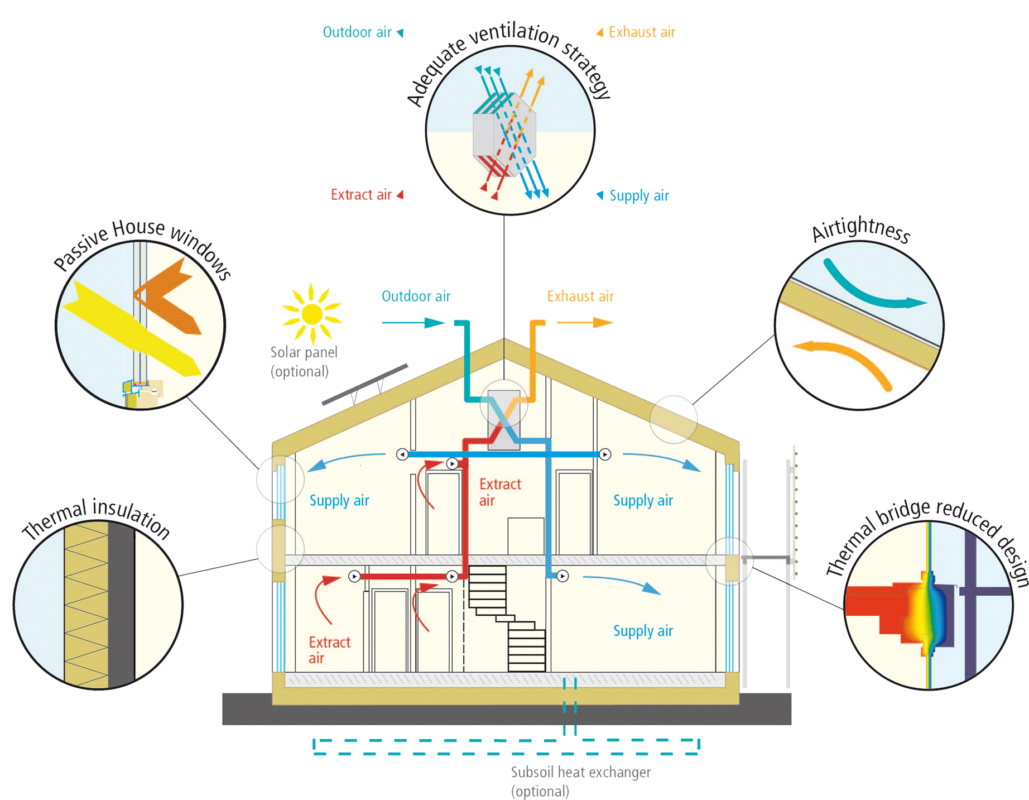No products in the cart.
Home Construction
Critical Considerations When Building a House in a Cold Climate
While many of us live in temperate climates, that is not true for everyone. In some cases, you may find that living in a cold climate is desirable. If so, you will need to know a few things about building a home in a cold climate. It’s very different from temperate climate home design and requires some specific steps. One of the first and most important is to ensure that you’re working with the right home design, which can be found at Truoba House Plans. Of course, there are other things to know and we’ll explore those below.
Follow Passive House Standards
Insulation plays a critical role in home construction no matter where you’re building. It’s important in temperate and subtropical areas, but even more important in cold climates. Go beyond the base code requirements, and also plan to use insulation in areas you would not ordinarily think about.
Normally, the exterior wall would have 6″ of insulation and a roof of 10″, which is not enough for any climate and far too low from the Passive House standards. The houses should use high-performance insulation, airtight construction, and passive heating and cooling techniques to keep rooms comfortable thought out the year.
To prevent cold from seeping up through the floor, use rigid insulation and crushed gravel under the home. Throughout the rest of the home, focus on using insulation with the highest R-value possible to help reduce heat loss during the winter, but also to limit heat gain during the warmer months of the year.
Use Natural Air
Many locations with cold climates have mild summers. This means that you may be able to save money by leaving out a central air conditioner. Instead of a costly A/C unit, design the home so that you can take advantage of natural cross-breezes. The home’s floor plan should be designed to maximize airflow, moving heated air out and cooler air into the home.
Insulation will play an important role here, too. Remember that its job is to maintain the inside temperature, whether that’s warm or cool. Good insulation will help keep a home cool during the summer as long as there is good airflow.
Your Windows Matter
Few design and construction elements matter as much as your home’s windows. Low-quality, low-efficiency windows allow in light, but also lots of heat. They can also allow heated and cooled air to escape. The natural tendency in cold climates is to limit the number of windows because of their tendency to bleed air in or out of the home. However, that can make the home too dark.
Instead, focus on strategic window placement and on using high-performance windows that block the loss of heat and cold, prevent UV rays, and still allow you to maximize the influx of natural light into the home.
Doors Matter Too
Doors are the weakest point in any home’s design. When open, they allow significant quantities of heated and cooled air to escape, but even when they are closed, air could be bleeding out around their edges. It is critical, particularly in a cold climate, to focus on using high-performance doors with good thermal protection, combined with door seals that go the distance and will stand the test of time.
Focus on Air Circulation
Cold climates require good air sealing, but this can lead to problems like stale air and moisture buildup within the home. An air circulation system will help pump out stale air, control unwanted moisture, and can help recapture heat from that air so that interior comfort is not compromised.
In Conclusion
These are just some of the important considerations to make when designing a home for a cold climate. Other things to keep in mind include the use of high-efficiency appliances, using LEDs instead of older style lights, using high-performance bathroom fixtures, and finding sustainable construction and finish materials that will last for decades.
Photo Credit: Passive House Institute



